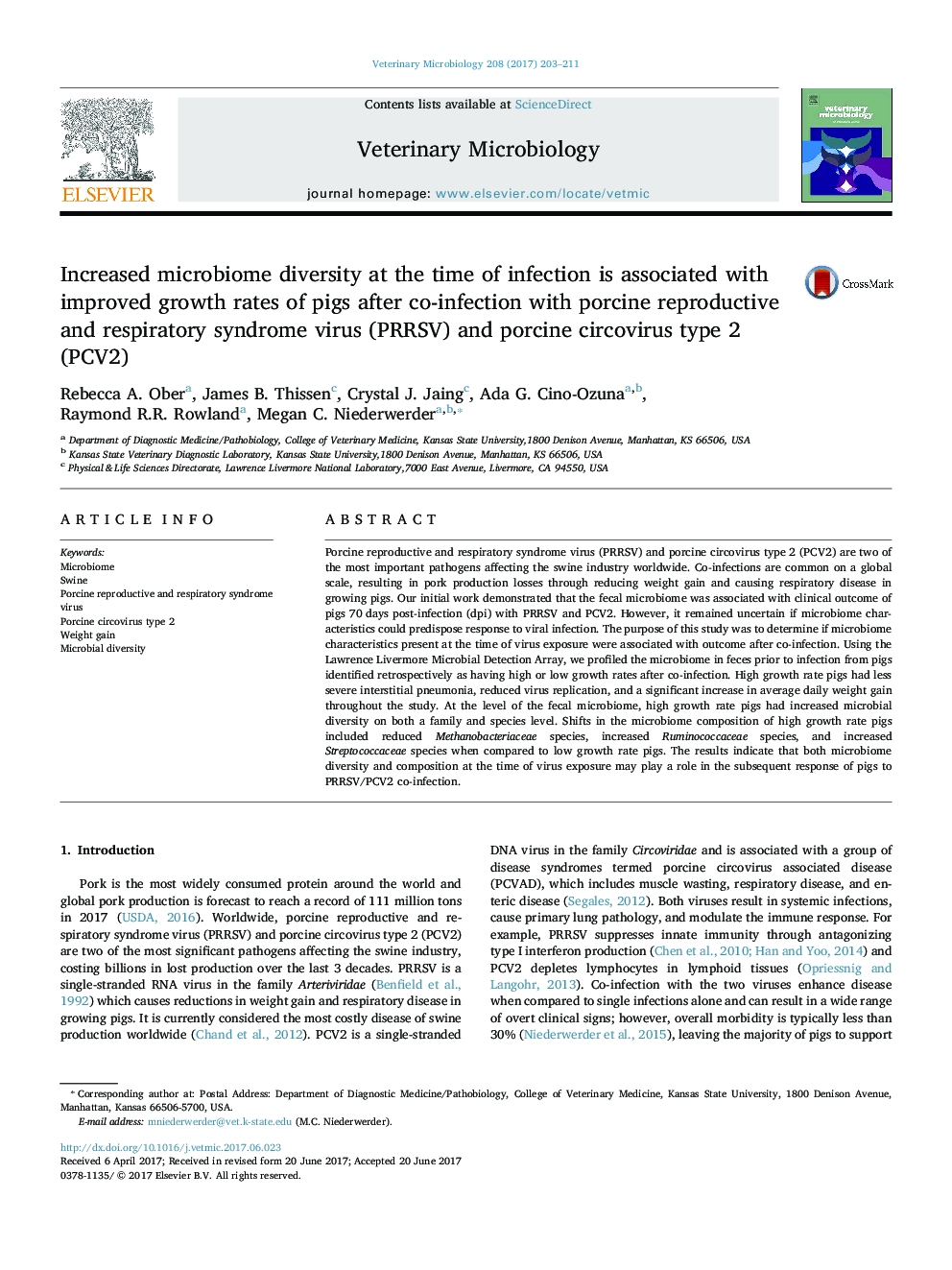| کد مقاله | کد نشریه | سال انتشار | مقاله انگلیسی | نسخه تمام متن |
|---|---|---|---|---|
| 5545188 | 1555315 | 2017 | 9 صفحه PDF | دانلود رایگان |
عنوان انگلیسی مقاله ISI
Increased microbiome diversity at the time of infection is associated with improved growth rates of pigs after co-infection with porcine reproductive and respiratory syndrome virus (PRRSV) and porcine circovirus type 2 (PCV2)
دانلود مقاله + سفارش ترجمه
دانلود مقاله ISI انگلیسی
رایگان برای ایرانیان
کلمات کلیدی
موضوعات مرتبط
علوم زیستی و بیوفناوری
علوم کشاورزی و بیولوژیک
علوم دامی و جانورشناسی
پیش نمایش صفحه اول مقاله

چکیده انگلیسی
Porcine reproductive and respiratory syndrome virus (PRRSV) and porcine circovirus type 2 (PCV2) are two of the most important pathogens affecting the swine industry worldwide. Co-infections are common on a global scale, resulting in pork production losses through reducing weight gain and causing respiratory disease in growing pigs. Our initial work demonstrated that the fecal microbiome was associated with clinical outcome of pigs 70Â days post-infection (dpi) with PRRSV and PCV2. However, it remained uncertain if microbiome characteristics could predispose response to viral infection. The purpose of this study was to determine if microbiome characteristics present at the time of virus exposure were associated with outcome after co-infection. Using the Lawrence Livermore Microbial Detection Array, we profiled the microbiome in feces prior to infection from pigs identified retrospectively as having high or low growth rates after co-infection. High growth rate pigs had less severe interstitial pneumonia, reduced virus replication, and a significant increase in average daily weight gain throughout the study. At the level of the fecal microbiome, high growth rate pigs had increased microbial diversity on both a family and species level. Shifts in the microbiome composition of high growth rate pigs included reduced Methanobacteriaceae species, increased Ruminococcaceae species, and increased Streptococcaceae species when compared to low growth rate pigs. The results indicate that both microbiome diversity and composition at the time of virus exposure may play a role in the subsequent response of pigs to PRRSV/PCV2 co-infection.
ناشر
Database: Elsevier - ScienceDirect (ساینس دایرکت)
Journal: Veterinary Microbiology - Volume 208, September 2017, Pages 203-211
Journal: Veterinary Microbiology - Volume 208, September 2017, Pages 203-211
نویسندگان
Rebecca A. Ober, James B. Thissen, Crystal J. Jaing, Ada G. Cino-Ozuna, Raymond R.R. Rowland, Megan C. Niederwerder,